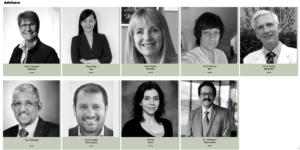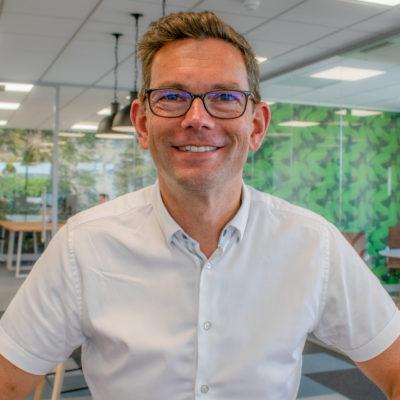As patients have become increasingly engaged in digital conversations about health, there has been a growing demand for access to the kind of scientific information that used to be available only to physicians. Indeed, at some major medical congress events, patient advocates are now treated with special honour.
That’s why we were excited to learn about a new platform, D-Coded, that launched just a few weeks ago to explain scientific articles in plain English.
The initiative is led by Jazz Sethi, the Founder of the Diabesties Foundation. Having been diagnosed with Type 1 Diabetes in 2009, Jazz quickly discovered there were very few patient-friendly resources online. With the dream of creating content that patients could relate to and understand, she founded the Diabestes Foundation in 2018, which is now a global nonprofit organisation, heading up awareness campaigns and providing education resources about Type 1 Diabetes. In November 2023, D-Coded was set up, with the goal of making clinical trials in Type 1 Diabetes more accessible to those with diabetes.

Source: docodediabetes
Daniel Ghinn, CEO of CREATION.co and I met with Jazz to learn about the launch of D-Coded.
(Daniel Ghinn): You recently launched a new platform, D-Coded Diabetes. What was the vision behind this?
Jazz Sethi: This has been a passion project of mine for a while now, which began after a Vertex trial was posted online. People with diabetes wanted to learn more about it, but they couldn’t understand the science – and that’s me included. It’s hard to understand the medical language and the diagrams, and as a visual learner it’s difficult to read and understand with the twelve-point font in all black and white. I realised patients are the key stakeholders but they had no access to the data. This gave birth to the idea ‘how do you make diabetes research simple for patients to understand?’. I was very clear that I didn’t want it to simply be a trial summary platform, because these already exist. That’s how it was born – D-Coded. Decoding diabetes research.
One girl in India read our article on the CONCEPTT trial, the first study we actually launched, which talks about continuous glucose monitors (CGMs) improving quality of life and outcomes if you have Type 1 Diabetes and are planning to become pregnant. After reading our article she went and asked for a CGM – saying she was not going to get pregnant without one as she realised how important it is.
What did it take to actually bring it together and launch that platform?
In 2019 I met Partha Kar, who is now a member of the D-Coded executive team and is also on the Board of Advisors in my foundation (Diabesties). I spoke to Partha about my idea and we then got in touch with Marta Koch, the editor in chief of the Lancet Diabetes and Endocrinology, and we all felt this is something we have to do.
There are a number of groups of people involved to make this happen. The first group of people are our D-Coders, who will go through a new clinical paper and simplify it to make it relevant for people with diabetes. Their focus is “why should someone with diabetes care about this?”. This then goes to the panel of those with lived experience – people with diabetes, who review language and pulse. We never want to compromise trial results’ clinical integrity, so the final seal of approval is given by an academic – sometimes this is the original author of the clinical trial. Without approval the work doesn’t go online. This assures our readers there is no misinformation and the summary is scientifically correct.We also have a design team who takes care of all the graphics, as the visuals are a really important part of helping patients understand the articles.

A panel of physicians and scientists give their time to support D-Coded.
Our panel of advisors – people like Pratik Choudhary, Chantal Mathieu, and all these researchers in the field are so generous with their time and really believe in this idea. I think the most heartwarming thing is that they all believe diabetes research should be accessible to people with lived experience.
What is the role of social media and helping you to build this network?
It’s so important, because we were able to launch it and cascade it through social media. The response that it has received has blown my mind! For example on day one, when we had just launched it, the website had about 8,000 hits. When you have people like Partha Kar on board sharing it with their networks, even more people see it. Two of our medical writers joined after it was launched through social media – so you’ve got people saying ‘this is really interesting, I want to join the team’ and of course we’re like “hop on board!”. It has helped having influential doctors on board, as it gives a lot of credibility and weight to the project.
People are visiting the D-Coded website globally and just recently on Twitter (X), somebody saw a new research paper published by the Juvenile Diabetes Research Foundation and they tagged Renza Scibilia and Partha Kar saying “hey, you should D-Code this article”. It’s already begun doing what it’s supposed to do, and hopefully it will become a bit of a movement within the Type 1 Diabetes space.
Amazing and groundbreaking findings in those newly diagnosed with #t1d 🤩
Good difference in daily insulin requirement with lesser c-peptide reduction compared to placebo.
It will be interesting to see the results following the 48 weeks, and on a larger scale.#diabeteschat https://t.co/QwY5T3teNm
— James Ridgeway (@James_Ridgeway_) December 7, 2023
How are you able to fund the project?
Initially it was funded using some of the Diabesties funds – we are a not-for-profit, so this was a project that comes under our education pillar. All the people who have come on board are in a voluntary capacity – our advisory board, our board of lived experience, everyone who is not a part of Diabesties are giving their time for free.
I do see a scope in the future for industry to have some involvement in this. Nothing has come by formally yet, but I will be presenting on D-Coded at the Advanced Technologies and Treatments for Diabetes (ATTD) congress in March 2024. So, hopefully we will get some more eyes on this project!
What’s your dream for what D-Coded could achieve?
My dream is that when authors write a new paper, they also want their papers to be D-Coded because if you think about it, for authors it is like opening up a whole new target audience. They will always write papers for journals, because they will always be there, but I also want them to contribute to D-Coded so their research can go to people with lived experience. That is my ultimate dream.
How do you keep the website up to date?
We always have two papers in stock ready, but we’re not being overly ambitious right now. We launch two papers a month because that is achievable and we don’t want to compromise the quality of it. Every single one of our illustrations takes time to develop and design because they’re unique to each paper.

Each decoded scientific article includes especially commissioned illustrations to support the explanation of the science. Source: dcodeddiabetes
What’s next for 2024?
The development team is actually working on making the website multilingual. It’s in development but it will take some time. We want the website to translate based on where you are in the world – so if you’re in India, it will give you a Hindi option and if you’re in Korea there will be a Korean option. It’s lots of steps – you need the correct API – but the team is working on it
—
When health stakeholders align over shared goals for better health communication and outcomes, innovation happens. D-Coded Diabetes is an excellent example of collaboration between health stakeholders including scientists and patients, and the result is better informed patients.
We’ve been studying digital innovations in health communication for decades. To talk about the part you could play in driving better health outcomes through digital innovation, get in touch.

 By
Daniel Ghinn and Hannah Ghinn
By
Daniel Ghinn and Hannah Ghinn 



